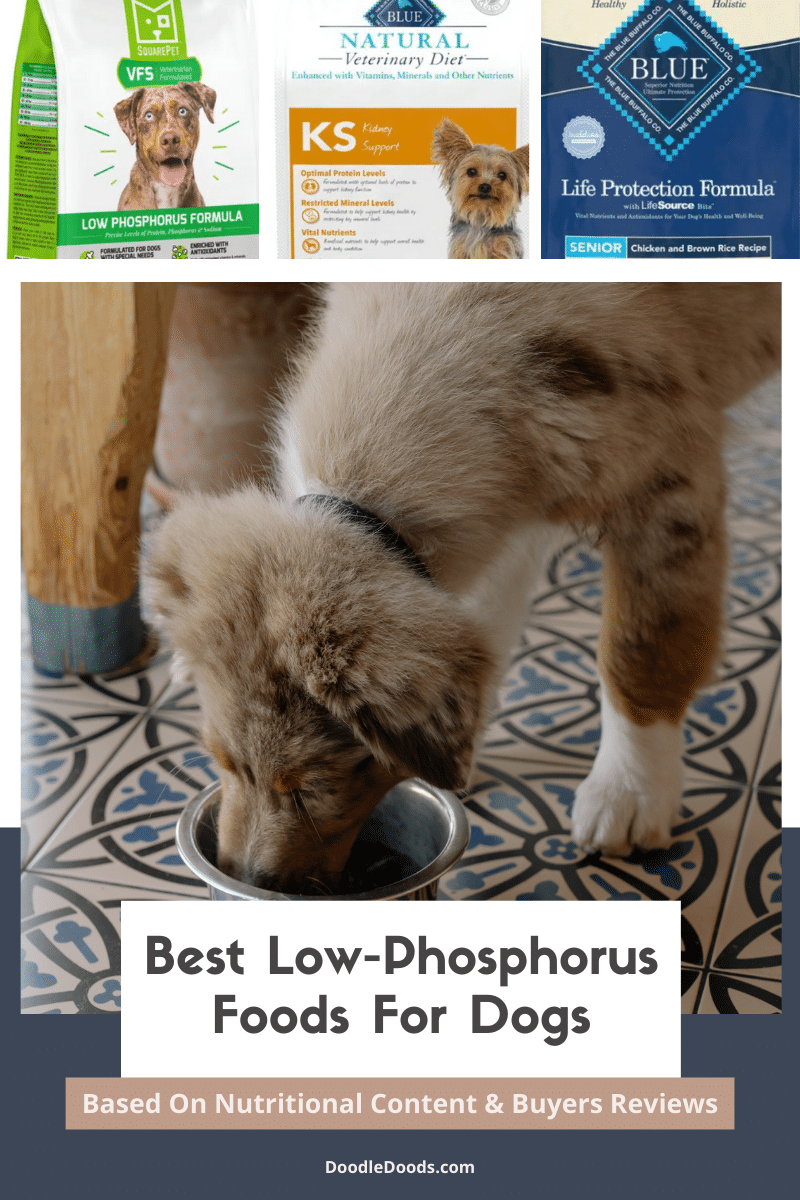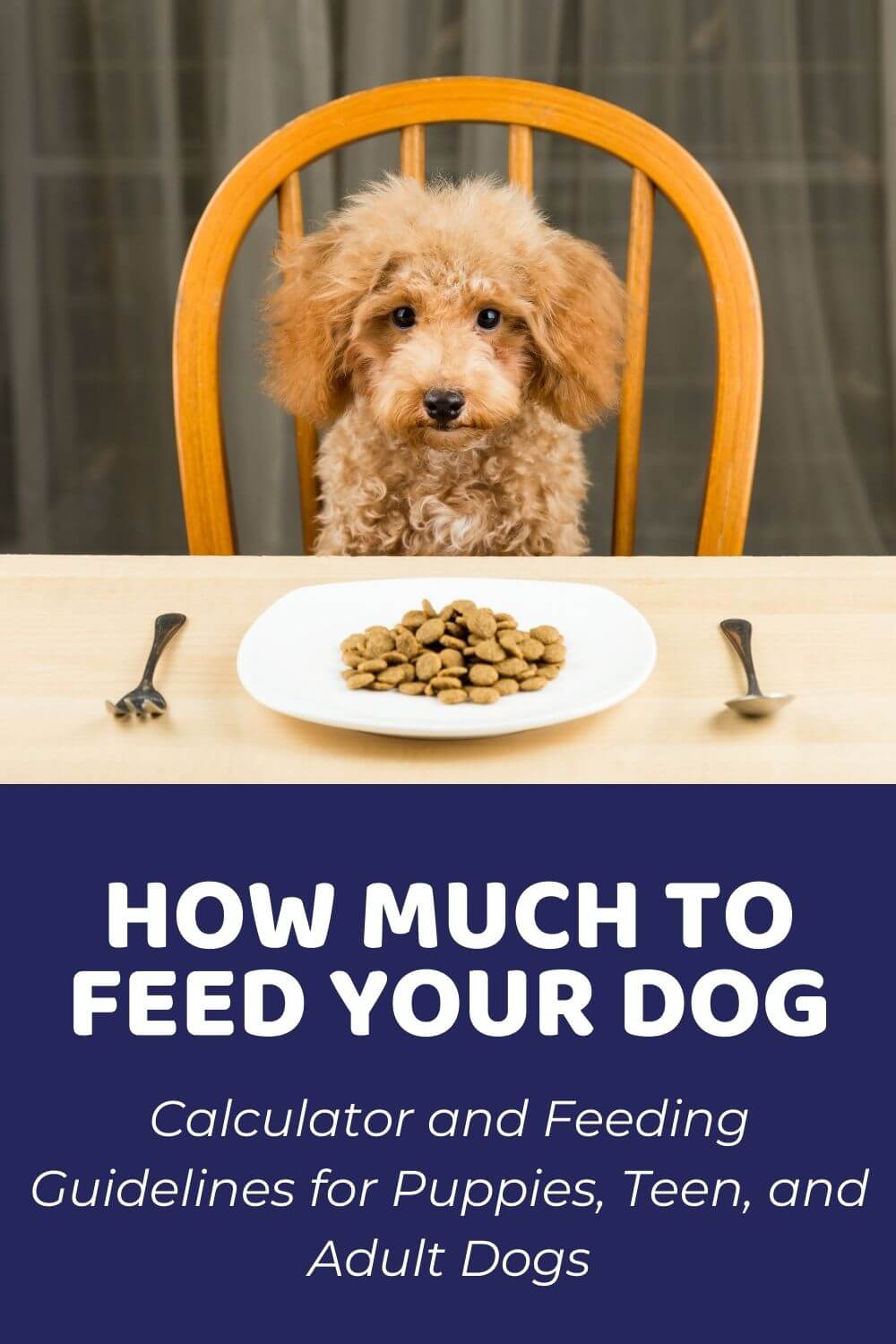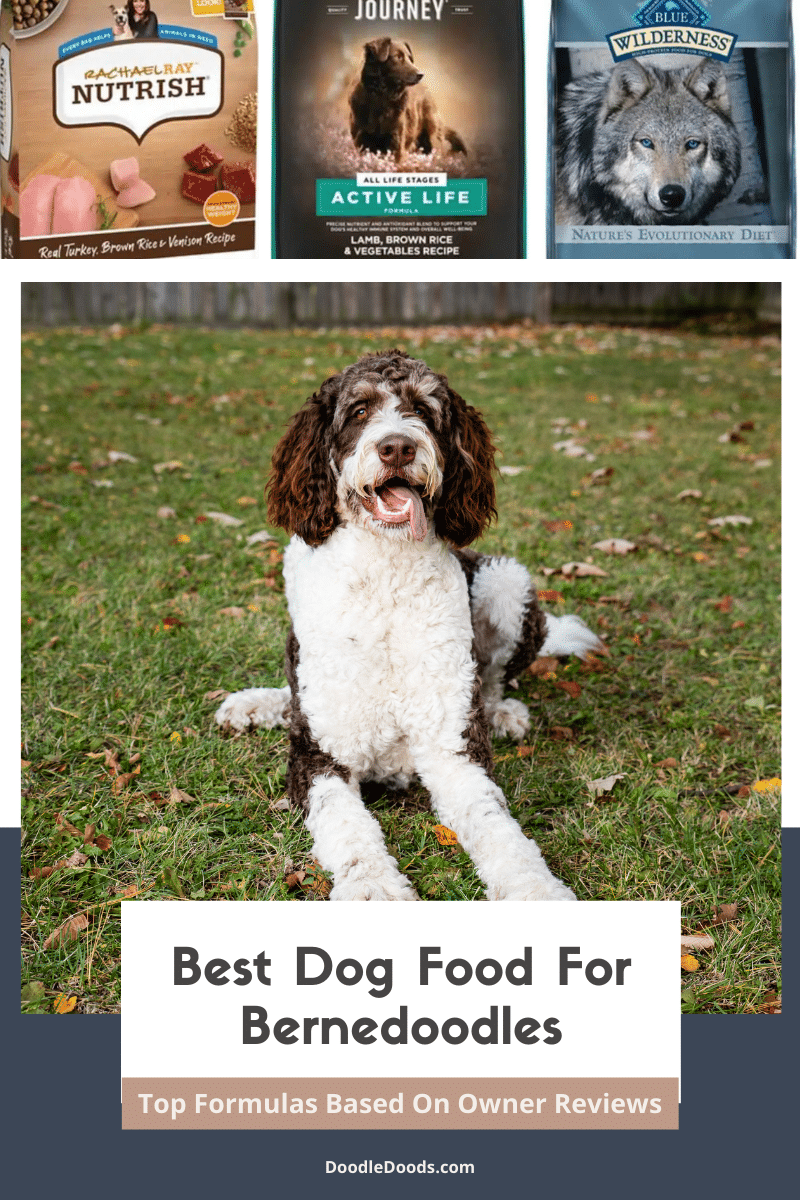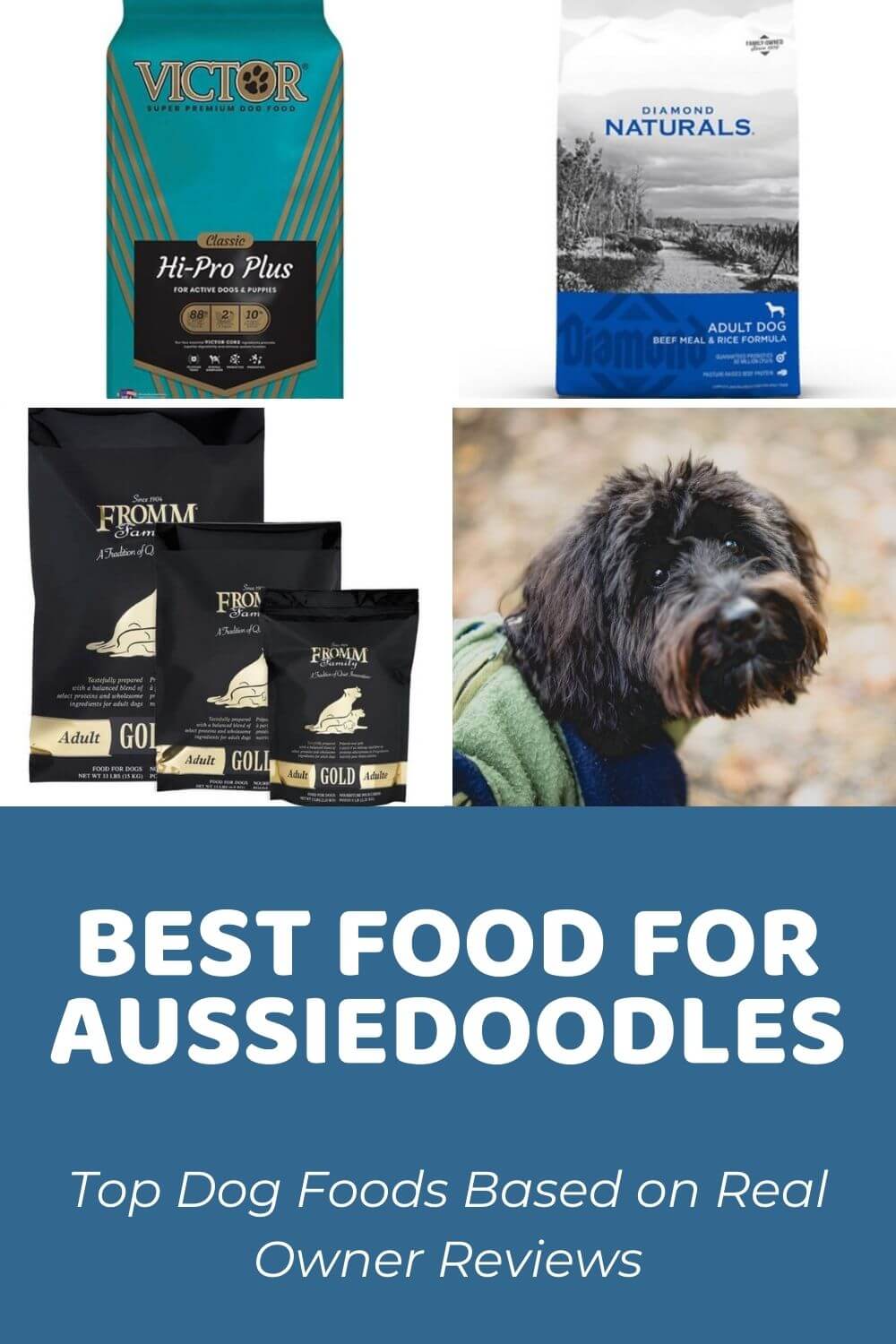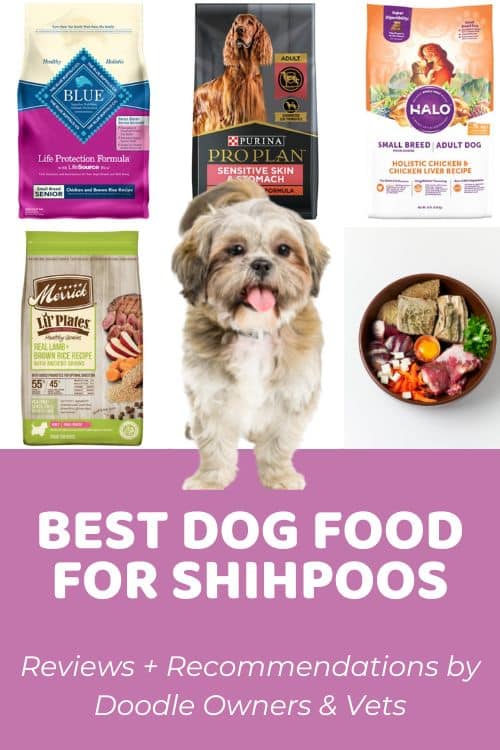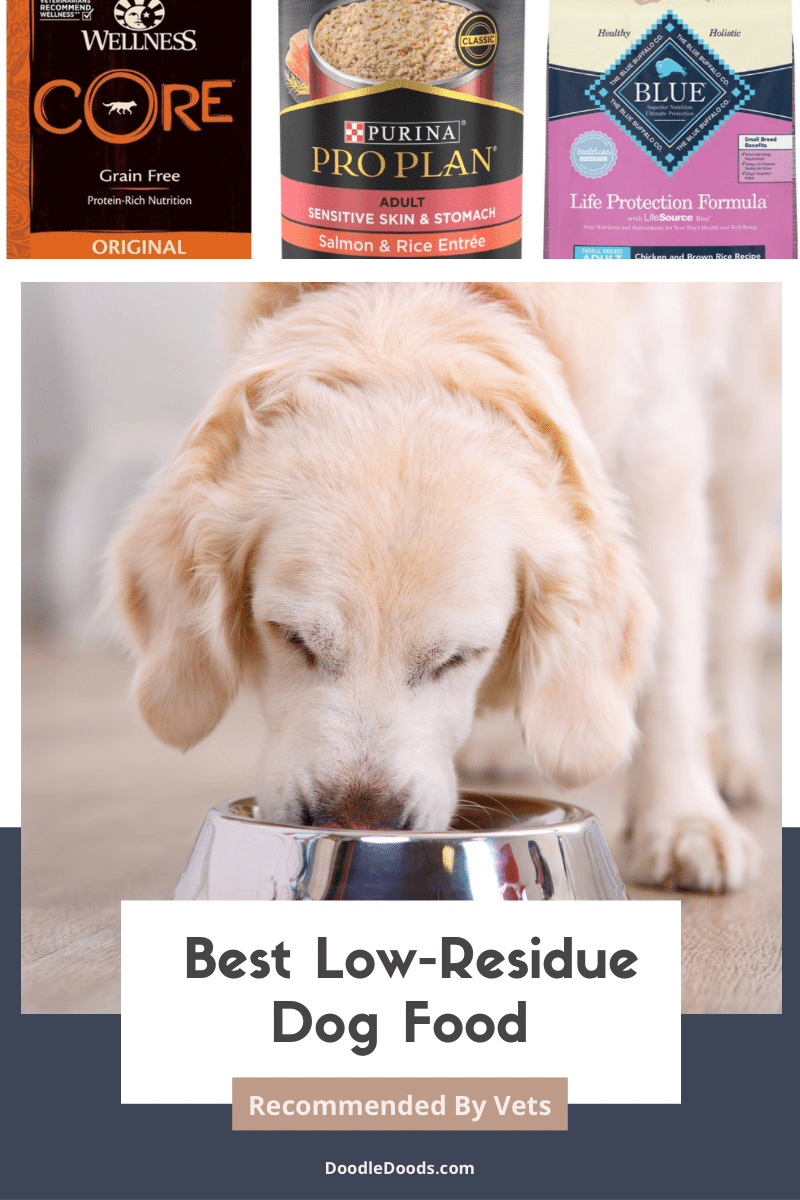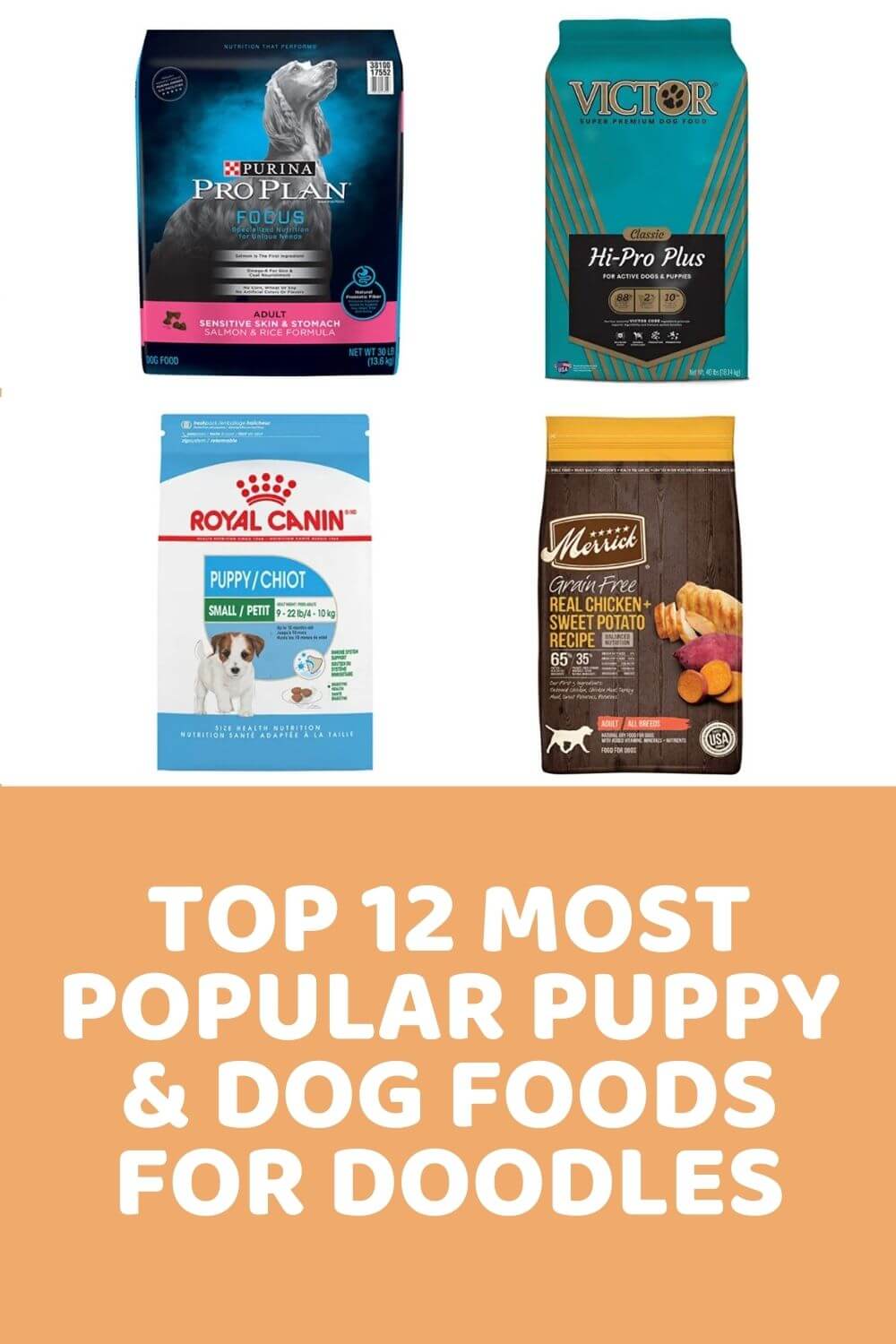If you’ve been recommended to put your pup on a low phosphorus dog food diet, then you’d probably like to learn about all the best formulas that are worth spending your hard-earned money on. In this guide, we talk about why dogs may need this special kind of diet, how to choose the right one out of all the low phosphorus foods for dogs available out there, and what are the things you should keep an eye out for when choosing a specific food for your pup.
Table of Contents
- Low Phosphorus Foods For Dogs: Intro
- 5 Best Low Phosphorus Foods For Dogs In 2023
- Blue Buffalo Natural Veterinary Diet KS Kidney Support Dry Dog Food
- SquarePet VFS Low Phosphorus Formula Dry Dog Food
- Purina Pro Plan Veterinary Diets NF Kidney Function Dry Dog Food
- What Is The Importance Of Low Phosphorus Foods For Dogs?
- How Do I Know If My Dog Needs A Low Phosphorus Diet?
- What Percentage Of Phosphorus Should Dogs Eat In Their Diet?
- Which Dog Foods Have Low Phosphorus?
- How Do You Reduce Phosphorus In Dog Food?
- How To Buy The Best Low Phosphorus Foods For Dogs?
- Our Best Picks For Low Phosphorus Foods For Dogs: Comparing The Formulas
- Prescription vs Non-Prescription Low-Phosphorus Foods: Which Is Better?
- Homemade Low Phosphorus Diet For Dogs
- The Dos And Don’ts Of Feeding Low Phosphorus Dog Food
- Low Phosphorus Foods For Dogs: FAQs
- Low Phosphorus Foods For Dogs: Final Verdict
Low Phosphorus Foods For Dogs: Intro
If you’re anything like us here at Doodle Doods, you’re likely doing everything on your part to ensure that your best pal stays healthy and happy throughout their lifetime. Needless to say, your dog’s diet and nutrition plays an integral role in their overall health and wellbeing.
You’ve likely made your way to this guide as your veterinarian has recommended you start feeding low phosphorus dog food to your pup. But with so many options on the market, it can be difficult to decide which foods are best for your best buddy. However, one thing is certain – if a low phosphorus diet is prescribed by your vet, then feeding your dog this special diet is absolutely essential for their overall health and longevity.
Here we’ve compiled a list of the best low phosphorus foods for dogs in 2023 that are both tasty and nutritious. But that’s not all! We’ll also talk more about the importance of low phosphorus foods for dogs, as well as how you can make sure that you’re feeding your pup a diet that’s actually beneficial for them.
Our Top Low-Phosphorus Foods For Dogs: Quick Overview
Before we jump into the in-depth reviews of the best low-phosphorus foods for dogs, here are our top picks to save you some time.
-
Pick #1:
Blue Buffalo Natural Veterinary Diet KS Kidney Support Dry Dog Food. A delicious, wholesome dry kibble that’s formulated with the finest natural ingredients to support healthy kidney function in dogs.
-
Pick #2:
SquarePet VFS Low Phosphorus Formula Dry Dog Food. Crafted with tasty cage free turkey from South Dakota and cage free whole eggs from California, this natural formula has precise, low levels of protein, phosphorus, and sodium.
-
Pick #3:
Purina Pro Plan Veterinary Diets NF Kidney Function Dry Dog Food. Packed with antioxidants and a restricted amount of high-quality protein, this dry food has been formulated with the help of canine nutritionists, researchers, and veterinarians.
-
Pick #4:
Blue Buffalo Natural Veterinary Diet KS Kidney Support Grain-Free Wet Dog Food. For pickier pooches, this wet dog food is the perfect pick. Enhanced with vitamins, minerals, and other nutrients, it contains controlled amounts of high-quality, real chicken.
-
Pick #5:
Blue Buffalo Life Protection Formula Senior Chicken & Brown Rice Recipe Dry Dog Food. Formulated with joint supporting ingredients like glucosamine and chondroitin, this dry kibble is perfect for senior dogs that need to limit their phosphorus intake.
-
Pick #6:
Hill’s Prescription Diet Soft Baked Soft & Chewy Dog Treats. Even dogs with special needs need their tasty treats! These treats help support kidney, joint, and heart health. And thanks to their soft texture, even elderly dogs can enjoy them!
5 Best Low Phosphorus Foods For Dogs In 2023
Blue Buffalo Natural Veterinary Diet KS Kidney Support Dry Dog Food
This Blue Buffalo Natural Veterinary Diet KS Kidney Support dry kibble is an excellent prescription formula that has controlled levels of phosphorus and sodium. This dry kibble is formulated to support your pup’s kidney health, while providing them with all the necessary nutrients, including some extra vitamins, minerals, and omega fatty acids.
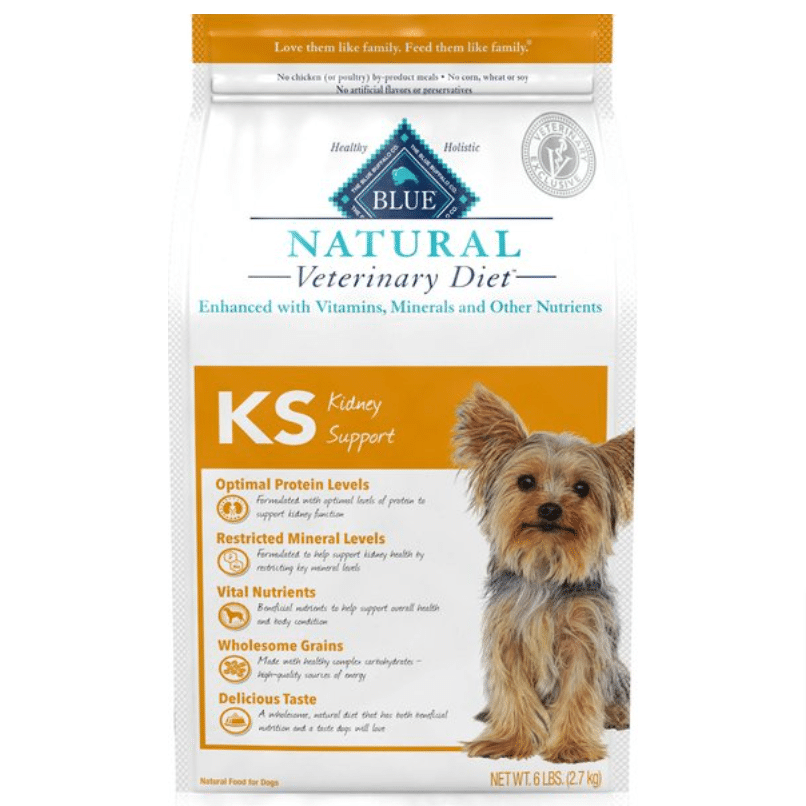
This formula has a phosphorus content of about 0.25-0.55%. It’s made with real, high-quality chicken, and it’s free from any poultry by-product meals, corn, wheat, soy, or artificial flavors or preservatives.
SquarePet VFS Low Phosphorus Formula Dry Dog Food
If you’re looking for a non-prescription low phosphorus food for dogs, then your pup just might love this dry kibble from SquarePet. It’s low in protein, phosphorus, and sodium, with just a 0-1-0.45% of phosphorus – this makes it one of the best non-prescription options out there!
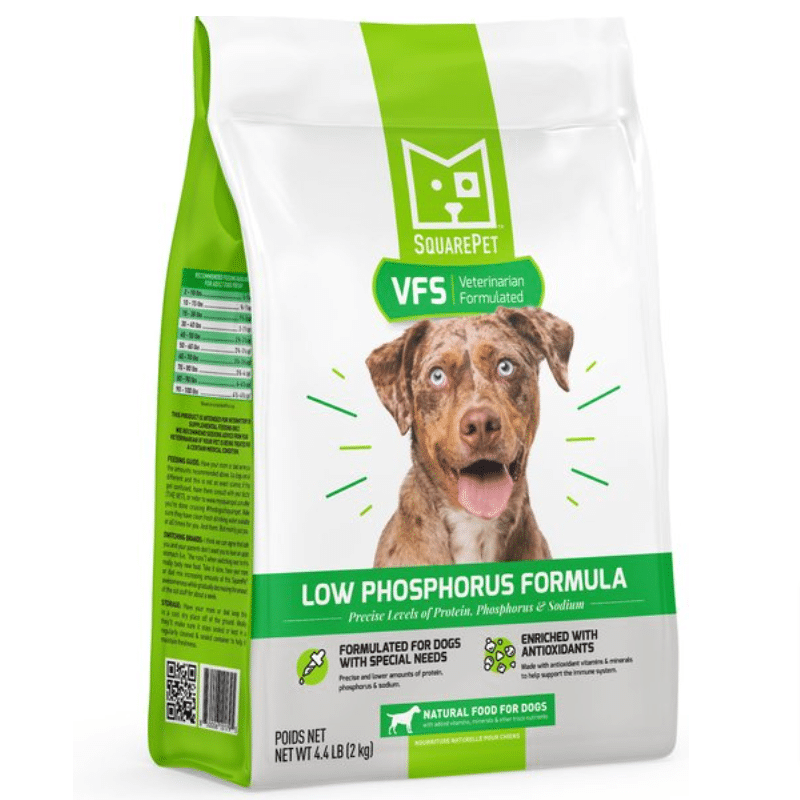
The kibble itself is formulated with high-quality and responsibly sourced ingredients. It’s also fortified with antioxidants and B-Vitamins, including vitamins C and E. You’ll also find ingredients like omega-3 fatty acids and fiber in this formula that will support your pup’s general health and wellbeing.
Purina Pro Plan Veterinary Diets NF Kidney Function Dry Dog Food
We have another prescription dry kibble that dog owners swear by – the Purina Pro Plan Veterinary Diets NF Kidney Function formula. It’s crafted with canine nutritionists, researchers, and veterinarians to support your pup’s kidneys while providing a great taste experience.
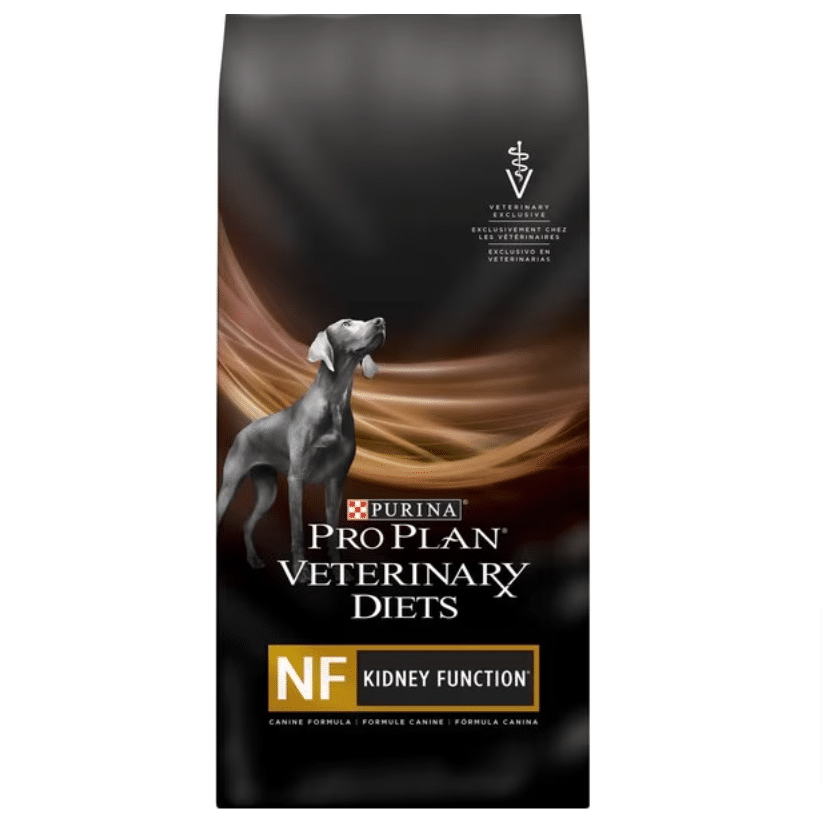
The phosphorus content in this formula is 0.4% and there’s about 12.5% crude protein, which makes it rather low protein kibble. It’s also fortified with healthy antioxidants that help fight free radicals and promote good health.
Blue Buffalo Natural Veterinary Diet KS Kidney Support Grain-Free Wet Dog Food
If you’re looking for a good low phosphorus wet food, then you might want to give this Blue Buffalo Natural Veterinary KS Kidney Support wet recipe a go. This is another prescription formula that has controlled levels of protein, phosphorus, and sodium to support your pup’s kidneys to the fullest.

It’s also formulated with some extra omega-3 fatty acids, L-carnitine, vitamin A, and B-complex vitamins. By the way, this formula is completely grain, soy, corn, and chicken by-product free, which makes it suitable for even the most sensitive tummies.
Blue Buffalo Life Protection Formula Senior Chicken & Brown Rice Recipe Dry Dog Food
Although not technically a low phosphorus formula per se, this Blue Buffalo Life Protection formula has a relatively low phosphorus content of about 0.6%. This dry kibble is specially designed for senior dogs that need to limit their phosphorus, protein, and sodium intake.

What we love about this kibble is that it also features ingredients like glucosamine and chondroitin that are both excellent for supporting the joints. It also features L-carnitine, taurine, and plenty of omega fatty acids. What’s more, this recipe is free from any soy, wheat, corn, or poultry by-product meals.
Bonus: Hill’s Prescription Diet Soft Baked Soft & Chewy Dog Treats
Of course, our list of the best low phosphorus foods for dogs would not be complete without a suitable treat recommendation. These prescription treats by Hill’s Prescription Diet are soft and chewy – just the way our pups like them! Thanks to their soft texture, even elderly dogs can enjoy them.
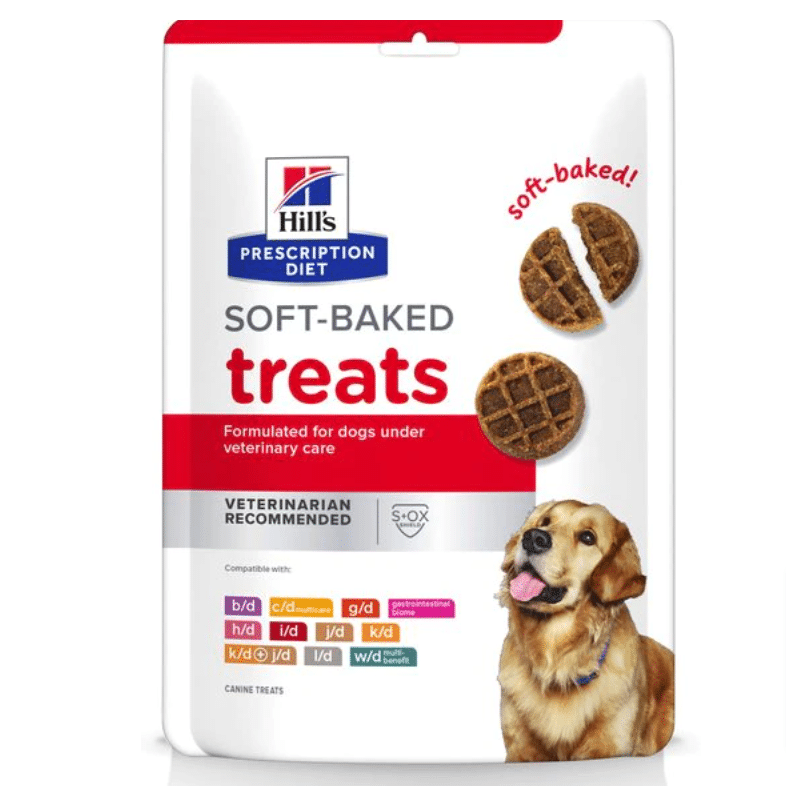
These treats contain 0.23% phosphorus on a dry matter basis, which means that they won’t compromise your pup’s special diet. So, if you had to stop giving your dog their occasional, well-deserved treat due to kidney problems, then these snacks may just be what the doctor ordered (pun intended).
What Is The Importance Of Low Phosphorus Foods For Dogs?
Phosphorus is an essential mineral that most dogs should be able to get from their daily kibble and wet foods. Phosphorus helps support bone health, teeth, and it promotes a healthy metabolism. In addition to that, it also plays a role in cell energy production. In fact, many dogs can actually be deficient in phosphorus due to illnesses or imbalanced diets.
On the other hand, for some dogs, high phosphorus foods can cause a wide range of other health issues. Namely, as the kidneys work at metabolizing the phosphorus your dog consumes, it’s vital that the phosphorus range in their diet is appropriate considering their kidney health. Of course, this especially applies to dogs that have kidney problems, including chronic kidney disease (CKD), or other similar conditions that affect how the kidneys metabolize phosphorus.
For this reason, vets recommend low-phosphorus foods to reduce the amount of work the kidneys have to do each day. These specially formulated dog foods help take the excess strain off the kidneys while proving your pup all of its daily nutrients without any compromise.
How Do I Know If My Dog Needs A Low Phosphorus Diet?
If your pup has been diagnosed with any type of kidney condition, your vet may suggest a low phosphorus dog food diet. This is because phosphorus can be difficult for their kidneys to process, and reducing the amount in their food is one of the most effective ways to slow down the progression of a kidney disease.
Unfortunately, there’s no cure for kidney disease and it has a progressive nature. However, by making dietary adjustments in terms of reducing phosphorus and protein in their diet, you can support your pup’s kidneys and reduce the rate at which the disease progresses.
If caught early on, your pup may live even years with a kidney disease. Nonetheless, providing them a low phosphorus diet and following your vet’s guidelines in terms of your dog’s treatment plan is vital.
At the end of the day, if you’re suspecting that your dog is experiencing kidney problems , it’s vital that you take them to the vet for a thorough checkup. This usually includes bloodwork and urinalysis, amongst other things.
Some common signs of kidney problems include:
- Increased thirst
- Increased urination
- Loss of appetite
- Lethargy
- Nausea and vomiting
- Pale gums
- Bad breath
- Mouth sores and ulcers
What Percentage Of Phosphorus Should Dogs Eat In Their Diet?
Regular dog food formulas for healthy dogs usually have a phosphorus content of about 0.6% to 1.5%, even up to 3% in some cases. In fact, many dog foods are even fortified with additional phosphorus.
However, dogs with renal problems are usually recommended to follow a low phosphorus diet, which typically means limiting the intake of phosphorus to 0.2-0.5%. In milder cases, even up to 0.7% of phosphorus may still be okay, provided that this has been discussed with your veterinarian.
Fortunately, reputable dog food brands with the AAFCO approval state the exact percentage of phosphorus on the packaging. This way, you can ensure that your dog is not getting any more or any less phosphorus from their diet.
Which Dog Foods Have Low Phosphorus?
Low phosphorus dog foods are specially formulated to accommodate dogs with kidney problems or other health conditions which make it difficult for them to process phosphorus and high quantities of protein. Although high protein foods are often recommended for healthy dogs, excessive protein intake can put too much strain on already compromised kidneys.
Common ingredients in low phosphorus dog foods include real, high-quality ingredients like lean proteins (in limited quantities), fruits and veggies like peas, blueberries, or apples, and complex carbohydrates, such as brown rice. Other ingredients commonly used in low phosphorus foods for dogs include omega-3 fatty acid sources, including flaxseed and salmon oil.
Reputable brands have the exact ingredient lists and nutritional information printed on their packaging, so you can be sure that you’re feeding the right type of diet to your pooch. These formulas are often labeled as kidney support or renal support, or have restricted or low phosphorus mentioned on the packaging.
In addition to that, you should pay close attention to the phosphorus and protein percentage that’s listed on the packaging. Although not all dogs with kidney problems have to eat low protein diets, feeding them a high protein diet may not be beneficial or particularly healthy.
How Do You Reduce Phosphorus In Dog Food?
Reducing phosphorus in your pup’s diet involves selecting foods specifically designed for the purpose. These dog food formulas are labeled as low phosphorus or renal diets, and generally contain fewer minerals than regular dog food.
Additionally, you can consult with your veterinarian to see if they recommend any dietary adjustments, such as switching to a wet food diet or adding in certain supplements or medications. Of course, keeping an eye on your pup’s blood work will help ensure their phosphorus levels stay within a healthy range.
Obviously, the key to reducing phosphorus in your dog’s diet is to not feed them any foods that are high in phosphorus. You should also avoid high protein and high sodium formulas, as these can also put excess strain on the kidneys. Some foods to limit or avoid include dairy products, organ meats, bones and antlers, meat by-products, soy, and artificial ingredients.
What’s more, you should not feed any table scraps or processed human foods to your pup if their kidney function has been compromised. You should be especially careful with all foods that are harmful for dogs, such as chocolate, grapes, nuts, etc.
All in all, choosing the right kind of diet and treatment plan depends on the severity of your pup’s kidney problems. In terms of slight decrease in kidney function, your vet may suggest a non-prescription dog food that has a lower phosphorus content than usual. However, in more severe cases, a prescription formula and even medications may be necessary. That’s why it is crucial to work with your veterinarian to ensure that your dog is eating the right kind of food.
How To Buy The Best Low Phosphorus Foods For Dogs?
Now that we’ve covered the basics of why and when you should opt for a low phosphorus dog food diet, you probably want to know how to make the best possible choice for your furbaby. Here are some tips to help you choose the most suitable option for your dog.
Check The Phosphorus Levels
When shopping for low phosphorus foods for dogs, you must carefully check the label. As we mentioned earlier, it’s vital that the phosphorus levels stay low. Regular dog food formulas usually contain around 1.5% phosphorus, some even going up to 3%.
However, the general recommendation for dogs with chronic kidney disease is about 0.2-0.5%. if the issue isn’t as severe, the phosphorus content up to 0.7% might be acceptable. Again, this largely depends on the severity of your dog’s case, so make sure you discuss this with your veterinarian beforehand.
Don’t Buy Low-Protein Food Unless Recommended By The Vet
Although low protein diets are often recommended for dogs with kidney issues, it’s vital that you discuss this with your vet before switching to a low protein diet altogether. If your pup has been diagnosed with renal disease or they’re prone to developing chronic kidney problems, a low-phosphorus diet is likely going to be your vet’s first recommendation.
However, you should only feed your dog a low protein diet if it’s specifically advised by your vet. Indeed, low phosphorus foods for dogs often have a lower protein content than many other formulas, especially when compared to high protein kibbles and wet recipes. But, keep in mind that veterinary prescribed renal support and kidney support formulas have a much lower protein content. That’s also why you need authorization from your veterinarian to buy those.
Above all, you want to make sure that you’re feeding your pup a diet that’s low in phosphorus, yet provides them all the necessary nutrients they need to thrive. Most importantly, protein plays a key role in tissue repair, and also supports the skin, hair, heart, tendons, ligaments, and other vital parts of your pup’s precious body.
Prescription Low-Phosphorus Dog Foods Must Be Certified
If your pup has been prescribed a low phosphorus dog food diet, then it’s important to check that the formula meets certification standards for nutrition. You’ll want to opt for a dog food formula that’s approved by the Association of American Feed Control Officials (AAFCO). To be fair, you should only opt for these certified formulas anyway, regardless if you’re feeding your pup a prescription or non-prescription diet.
The AAFCO requires that the product meets all the nutrients that are advertised on the packaging. With prescription formulas, the guidelines are even stricter, as the phosphorus content has to be precisely mentioned as to not harm any animals who eat it. Reading the label and verifying that it actually is low phosphorus will help you make sure your pup is getting a nutritious and balanced meal with no potential harm to their health.
Wet vs Dry Food Debate
When you’re buying low phosphorus dog food for your pup, it is important to find a formula that your pup loves. That’s especially true for dogs that have experienced loss of appetite due to their kidney problems, or who are simply picky eaters. You may even have to try out different options until you find the one your pooch likes best.
As low phosphorus foods for dogs come in either wet or dry varieties, you can either opt for one of them, or have both of them at hand depending on what your pup’s feeding schedule looks like. Fortunately, both varieties tend to come in various flavors, such as chicken, lamb, or fish. So, choosing the right one might require a bit of trial and error.
One thing we have to note is that wet foods already have a much higher moisture content. As dogs with kidney problems may have issues with proper hydration, a wet recipe may be helpful in that area. Nonetheless, make sure you opt for something that your dog actually enjoys to eat as to avoid any other health issues.
Consider The Nutrients That Support Your Dog’s Kidney Health
Feeding a low-phosphorus diet is an important step in managing kidney disease, but there are other nutrients that may be beneficial for your pup’s health. Overall, a low phosphorus, low sodium, and moderate protein diets are recommended for dogs that have reduced kidney function. However, they still need to get their essential vitamins, minerals, and fatty acids from their diet.
For instance, omega-3 fatty acids are excellent to keep inflammation at bay, and they may also support the brain, heart, digestive system, skin, coat, and eye health. Many low phosphorus dog foods even contain some extra omega-3s! In addition to that, Vitamins B, C, and E can also be helpful, and many formulas contain them to make sure that even with a low phosphorus diet, dogs get the nutrients they so desperately need.
Your vet may also recommend you to give your dog some additional omega-3 supplements, potassium, or other vitamins. This depends on the type of food you’re feeding your pup, and also their overall health. Above all, you should never add any supplements into your dog’s diet unless it’s advised by your veterinarian!
Our Best Picks For Low Phosphorus Foods For Dogs: Comparing The Formulas
| Blue Buffalo Natural Veterinary Diet KS Kidney Support Dry Dog Food | SquarePet VFS Low Phosphorus Formula Dry Dog Food | Purina Pro Plan Veterinary Diets NF Kidney Function Dry Dog Food | Blue Buffalo Natural Veterinary Diet KS Kidney Support Grain-Free Wet Dog Food | Blue Buffalo Life Protection Formula Senior Chicken & Brown Rice Recipe Dry Dog Food | |
| Crude Protein | 14% max | 14% min | 12.5% min | 3% min (13.63%) | 18% min |
| Phosphorus | 0.25-0.55% | 0.1-0.45% | 0.4% max | 0.08% min | 0.6% min |
| Sodium | 0.1-0.25% | 0.1-0.4% | 0.4% max | 0.03%(0.13%) | 0.22% |
| Dry or Wet? | Dry Kibble | Dry Kibble | Dry Kibble | Wet Food | Dry Kibble |
Prescription vs Non-Prescription Low-Phosphorus Foods: Which Is Better?
When it comes to prescription vs non-prescription low phosphorus foods for dogs, the decision will likely be made by your veterinarian. As a general rule of thumb, non-prescription low phosphorus dog foods are often recommended to dogs with milder kidney problems, whereas prescription grade formulas are a necessity for dogs with either chronic kidney disease or other related conditions.
Prescription diets offer specific nutrients in precise ratios, which is vital when managing chronic medical conditions. If you remember from earlier, prescription grade formulas must have the AAFCO label on the packaging, stating exactly how much phosphorus, protein, and other nutrients are in the food.
Ultimately, the best option for your pup depends on their individual health needs and should be evaluated with your vet’s guidance. Before you start feeding any type of low phosphorus dog food to your pooch, it’s crucial that you consult with your vet after having all the necessary tests and analysis done.
Homemade Low Phosphorus Diet For Dogs
Although many devoted pet owners love to cook homemade food for their dogs, we advise against going this route. For healthy dogs with no underlying medical conditions, a homemade dog food diet could be very much beneficial. You’ll know exactly what goes into the meals and don’t have to worry about any unfamiliar ingredients. However, even for healthy dogs, a homemade diet could potentially be harmful, as it’s much easier to store the meals with no contamination. Moreover, you might not be able to ensure that your dog is getting all their essential micro and macronutrients in balanced ratios from their diet.
So, when we’re talking about dogs that have either minor kidney problems or full on kidney disease, a homemade low phosphorus diet may not be the best choice. As we mentioned earlier, prescription formulas have precise ratios stated on the packaging, which means that they cannot exceed the stated amount of phosphorus and other nutrients. Achieving that at home can be very difficult!
Still, if you’re set on cooking your dog’s meals yourself, we strongly urge you to work with a certified veterinary nutritionist who can guide you throughout this process. Of course, you should also include your veterinarian into this discussion to ensure that you’re not harming your pet in any way. Your vet can also provide additional tips on specific ingredients to use, as well as advice on portion sizes that fit within your pup’s dietary needs.
The Dos And Don’ts Of Feeding Low Phosphorus Dog Food
Obviously, a lot goes into figuring out what and how exactly you should feed your dog a low phosphorus diet. Here are some dos and don’ts you should keep in mind:
- Do: Follow the exact instructions from your vet when it comes to choosing the right formula and following meal plans or portion sizes.
- Do: Select dog foods that are labeled as “Low Phosphorus” or “Reduced Phosphorus” on the packaging.
- Do: Always check the nutritional information on the packaging to make sure the amount of phosphorus (and also protein and sodium!) is within the limits that your vet has recommended.
- Do: Opt for low phosphorus dog treats or avoid feeding your pup treats altogether.
- Don’t: Feed table scraps to your pup, as they often contain high amounts of phosphorus. No bits of sausage, beef jerky, cake, or any packaged foods! Only follow the low phosphorus diet your vet has recommended, treats included.
- Don’t: Feed raw meats, antlers, bones, or other items that are high in phosphorus to your dog.
- Don’t: Supplement with any additional vitamins, minerals, or other supplements that haven’t been clearly recommended by your vet.
Low Phosphorus Foods For Dogs: FAQs
It’s possible to lower your pup’s phosphorus levels naturally by making sure they are following a low-phosphorus diet. Start by selecting foods that have a phosphorus percentage of about 0.2-0.7%, depending on your pup’s current health condition. You should always check the nutrition label for the phosphorus percentage to ensure it does not exceed what your vet has recommended.
Additionally, avoid giving table scraps to your pup and make sure they get plenty of fresh water throughout the day, as staying hydrated can help flush out any excess phosphorus from their body. Finally, talk to your vet about any additional guidelines you should follow in order to keep your pup’s phosphorus levels healthy.
You can reduce phosphorus levels in your pup’s food by selecting a food that is labeled as “Low Phosphorus” or “Reduced Phosphorus” on the packaging. In many cases, these formulas are only sold by your veterinarian’s authorization. They may also recommend a “Kidney Support” or “Renal Support” formula. In milder cases, your vet may advise you to opt for a non-prescription dog food formula that has a lower phosphorus percentage than most others on the market.
When it comes to high phosphorus foods for your pup, you should avoid giving them any processed foods such as deli meats or pre-made frozen meals. In fact, you should avoid giving your dog any human foods, table scraps, or processed meals altogether. Other high phosphorus ingredients to stay away from include dairy products, organ meats, nuts, peanut butter, beans, and lentils. If you aren’t sure about a certain food item’s phosphorus content, it’s best to steer clear from them. Feeding your dog a special low phosphorus formula ONLY is usually the best way to go.
Low phosphorus foods for dogs are designed to reduce phosphorus levels that the kidneys have to deal with. As a result, these special diets won’t put as much strain on the kidneys, which can postpone the progression of kidney disease. In more severe cases, your vet might advise you to switch to a special low protein and low phosphorus diet to further reduce the amount of work the kidneys have to do.
A low phosphorus dog food with moderate (or some cases low), yet high-quality protein is much easier on the kidneys. Additionally, you should opt for formulas that have low sodium, and also a limited amount of other minerals.
Low Phosphorus Foods For Dogs: Final Verdict
When it comes to finding low phosphorus foods for your pup, you should start out by taking your dog to the vet and discussing potential options with them. Based on your dog’s blood work, urinalysis, and their overall health, your vet will be able to recommend the most suitable option for your beloved pal. There are both prescription and non-prescription low phosphorus foods for dogs out there, and choosing one will depend on how severe your pup’s condition is. We hope this guide has been helpful, so you can make the right decision concerning your dog’s health and wellbeing.
Learn How to Care for Your Doodle Puppy!

Perfect for first-time Doodle parents, get ALL your questions answered, including questions new Doodle parents don’t even think to ask.
Plus, get $700 worth of Bonus Materials for FREE, including:- Doodle Parenthood Community and Support Group ($190 value)
- Doodle Puppy Growth Tracker ($20 value)
- EMERGENCY Cheatsheet: When To Call The Vet Immediately ($50 value)
- HELP! Button ($145 value)
- And SO MUCH MORE!

